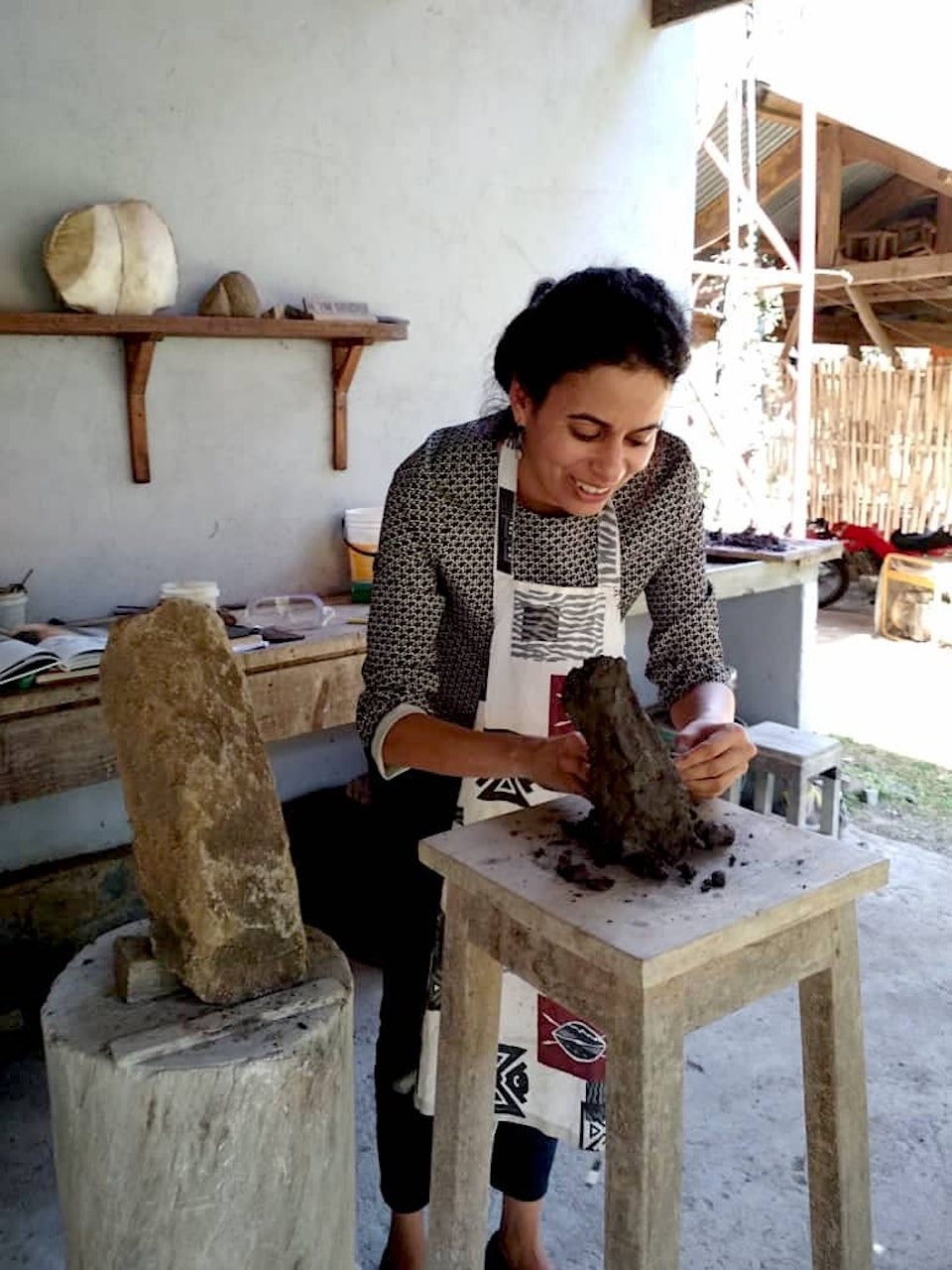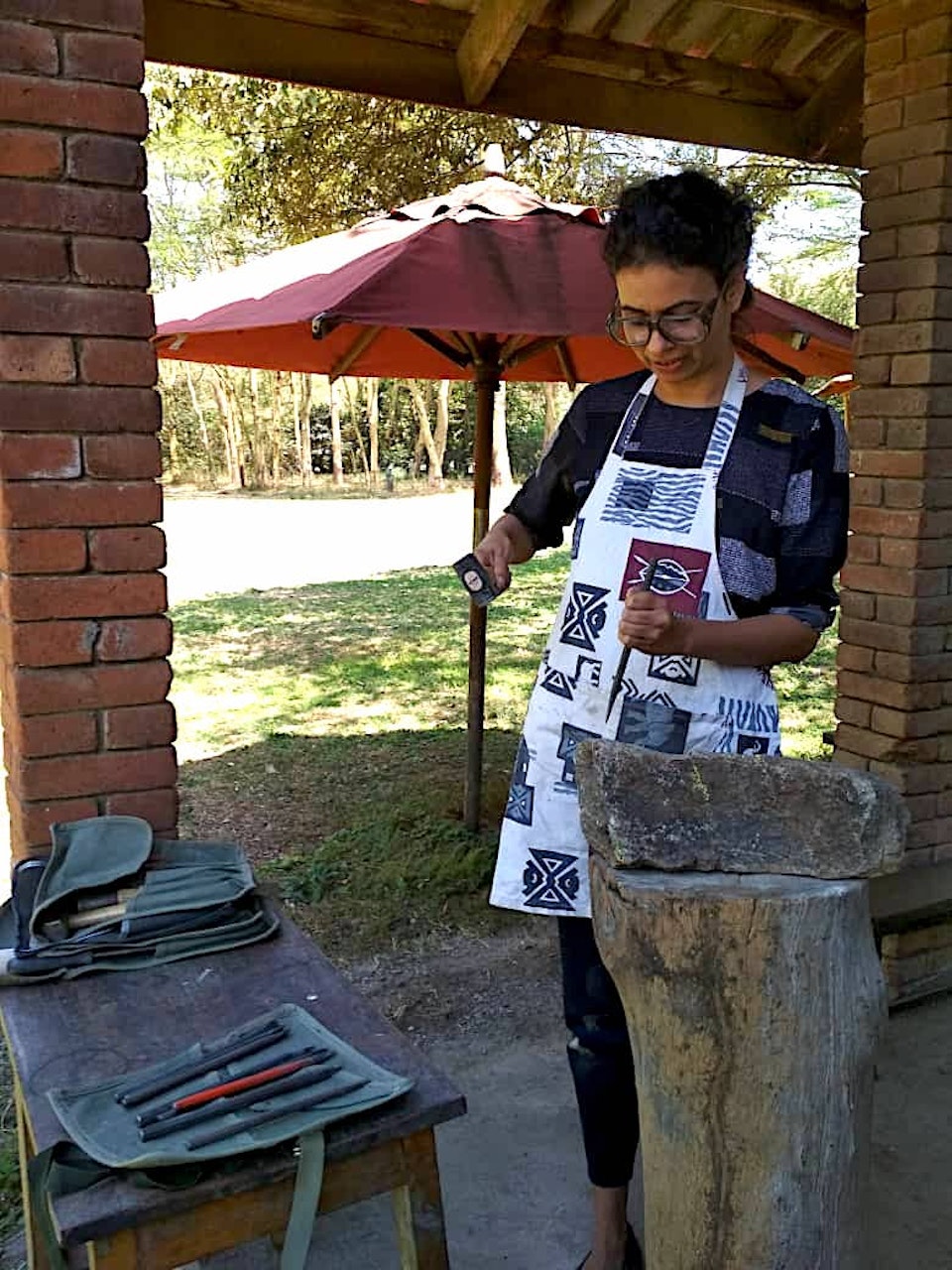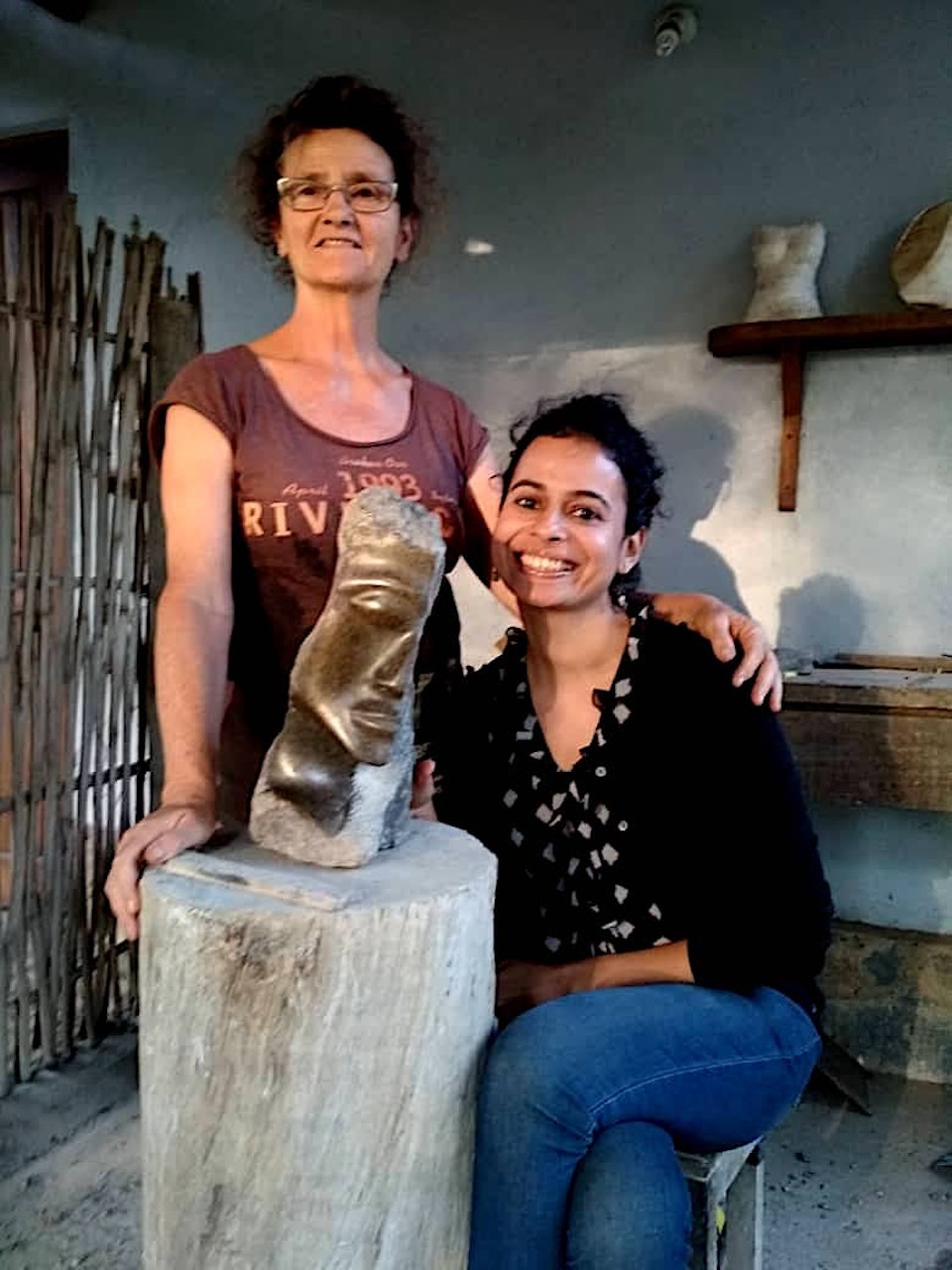November 16, 2018
Carving a Life in Stone
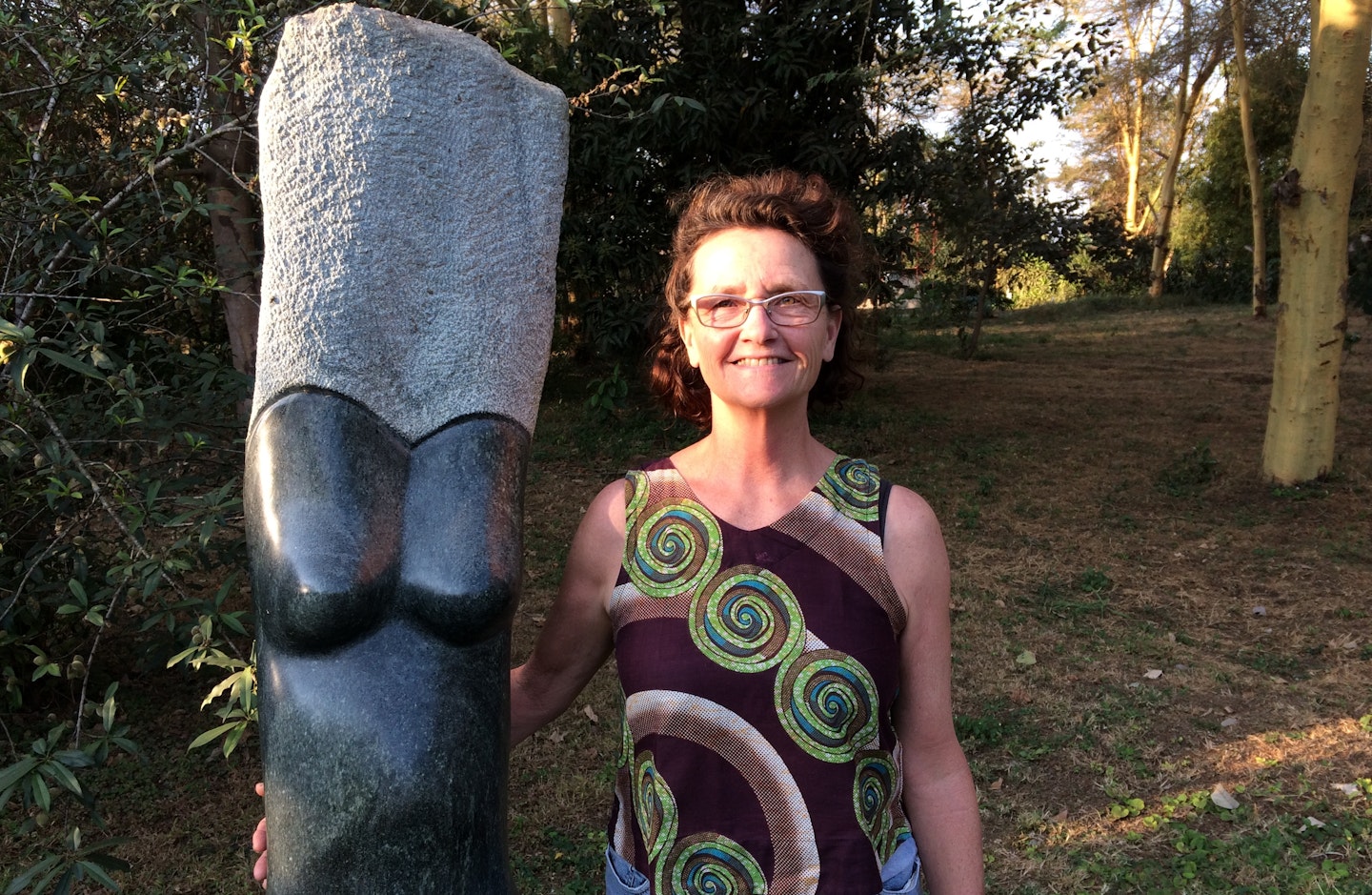
When I decided to visit Tanzania this year, the first thing I did was look up the VAWAA website to see if they had any artists there as part of their community. As luck would have it, I stumbled upon a picture of Mieke, a stone sculptor from Arusha, smiling under the African sun against a circle of her many carvings. I had never sculpted in my life before, but as my gaze swept over the primal forms of her work, some ancient life force seeming to run through them, I knew I wanted to immerse myself in this craft, a craft raw and as old as civilization in a land, in many ways, equally elemental.
Sculpting a serpentine stone in Mieke's studio. Courtesy of Sarika Pandit.
Three months later, I found myself in Mieke’s work shed, hammering away at a ten-kilo grey serpentine stone selected with her help that morning. Narrow and oblong, the shape had immediately called to me from the crowd of rocks scattered in her backyard. I had gently placed it on a wooden stump in the shed, feeling with my hands its grooves, its cuts, feeling slightly daunted at the prospect, not knowing what I would make of it. Thankfully, Mieke eased me into the process by asking me to, first, draw the stone from all angles on paper and then to mould its shape in three dimensions in clay. As I did this over the next few hours, I began to get a sense of all its facets and slowly I was able to visualise the form it would take. In my imagination I saw a face of a woman silently emerging out of stone, her left side carved out on one facet, her right half left unformed on raw, untouched stone. “Are you certain you want to sculpt only one side of the face?” Mieke asked, skeptical, when I told her. “It might look scary.” I was far from feeling certain but I decided to go with my instinct.
"Mieke eased me into the process by asking me to, first, draw the stone from all angles on paper and then to mould its shape in three dimensions in clay."
Mieke was a wonderful teacher. Instructive without being intrusive, she knew just when to step in and help and when to let me be. I felt instantly comfortable with her and I particularly enjoyed our afternoon breaks sipping tea, snacking and chatting about all things sculpture, art and life. Originally from the Netherlands, she had made Arusha her home thirty years ago and now spoke Kiswahili as well as any local. It was lovely being a part of her daily life for a week and catching a glimpse into the lives of the locals she knew through a visit to their homes, banter over traditional home cooked meals and sightseeing on boda bodas.
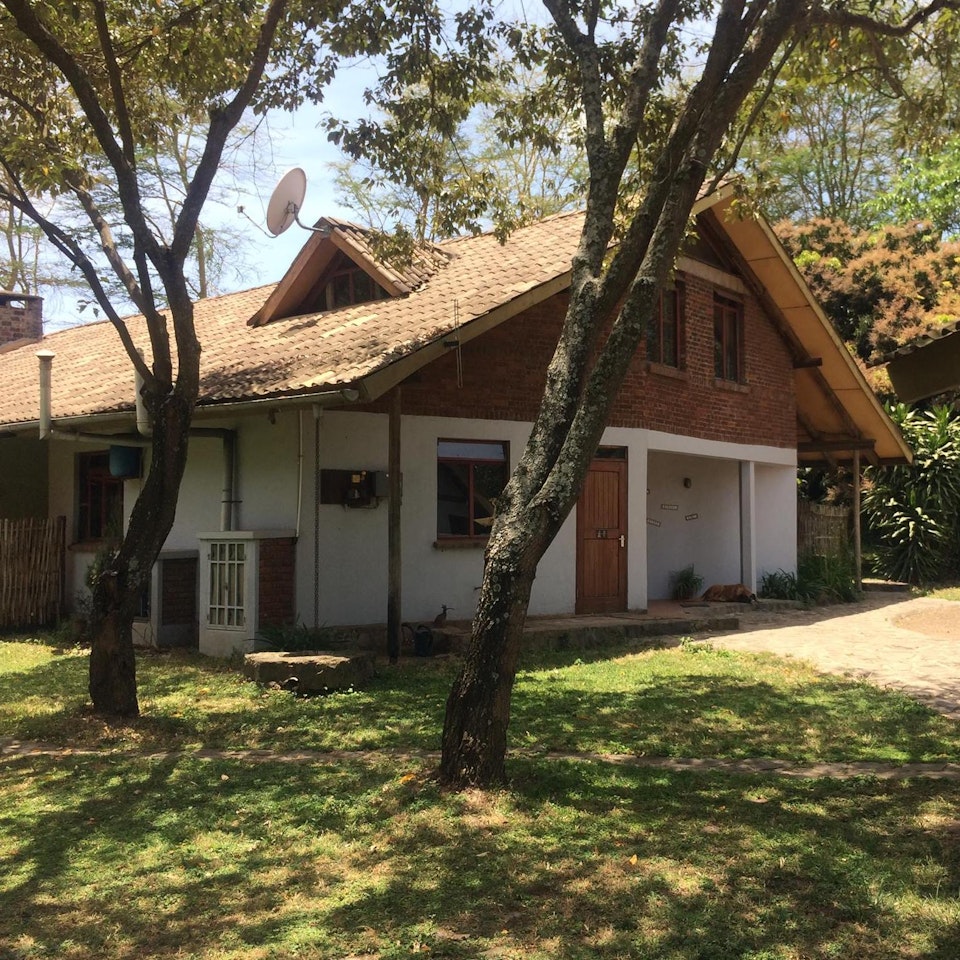
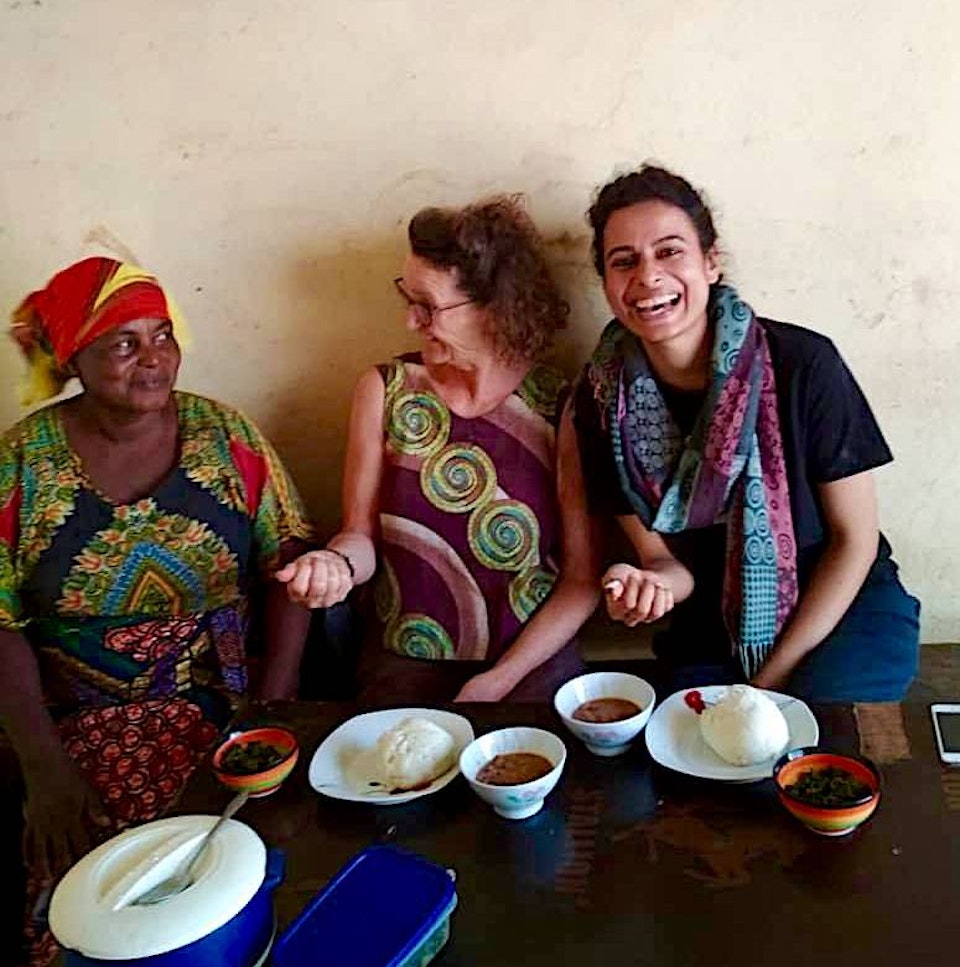
Life in Arusha, Tanzania. Courtesy of Sarika Pandit.
I could tell that Mieke loved the land. All her work was a homage to it. “The stone decides the form I give it,” she explained when I asked her about the thought behind some of her sculptures.
That stone carving requires patience, I learnt over the next five days as I went through the steps of the process of sculpting: fashioning a rough form with a hammer and chisel, sculpting the finer curves with a thin metal file and then polishing them with sandpaper of different grades. I also began to experience the power of touch as I learnt something new of its form and its texture with every stroke. Hard and impassive though the stone seemed, I realized that it needed to be treated with care, with precision, with the time it deserved before it came into its own.
"I also began to experience the power of touch as I learnt something new of its form and its texture with every stroke."
Mieke believed that each stone radiated an energy that flowed through it from the earth and into the universe. I felt inclined to agree. On the first evening, I had stood amidst the circle of her magical sculptures rising like prehistoric edifices in her sprawling garden gallery. Lit up from below, they looked like a garland of light twisting in the forest and as I had stood listening to their silence, I had felt as if I were enclosed in some sort of a secret pagan world that no other living soul was privy to. I’d like to fancifully think that some of that magic from her work stayed with me as I chiseled the contours of my stone lady’s profile over the next five days. Time flew and before I knew it, it was my last day of working at Mieke’s. The sun was bright in a clear blue sky, the air slightly chilly. Behind me, in the shed, she stood against the wall, surveying my stone from a distance. “It’s strange,” she said quietly, “Your carving does not look scary at all. It looks calm. Perhaps it is your energy that has flowed into the stone.” Looking back, I think, calm is exactly how I felt throughout my stay in Arusha. I had never imagined that working on stone would be quite so therapeutic, but in those five days, I remember being fully present in the moment in a way that I have often struggled with.
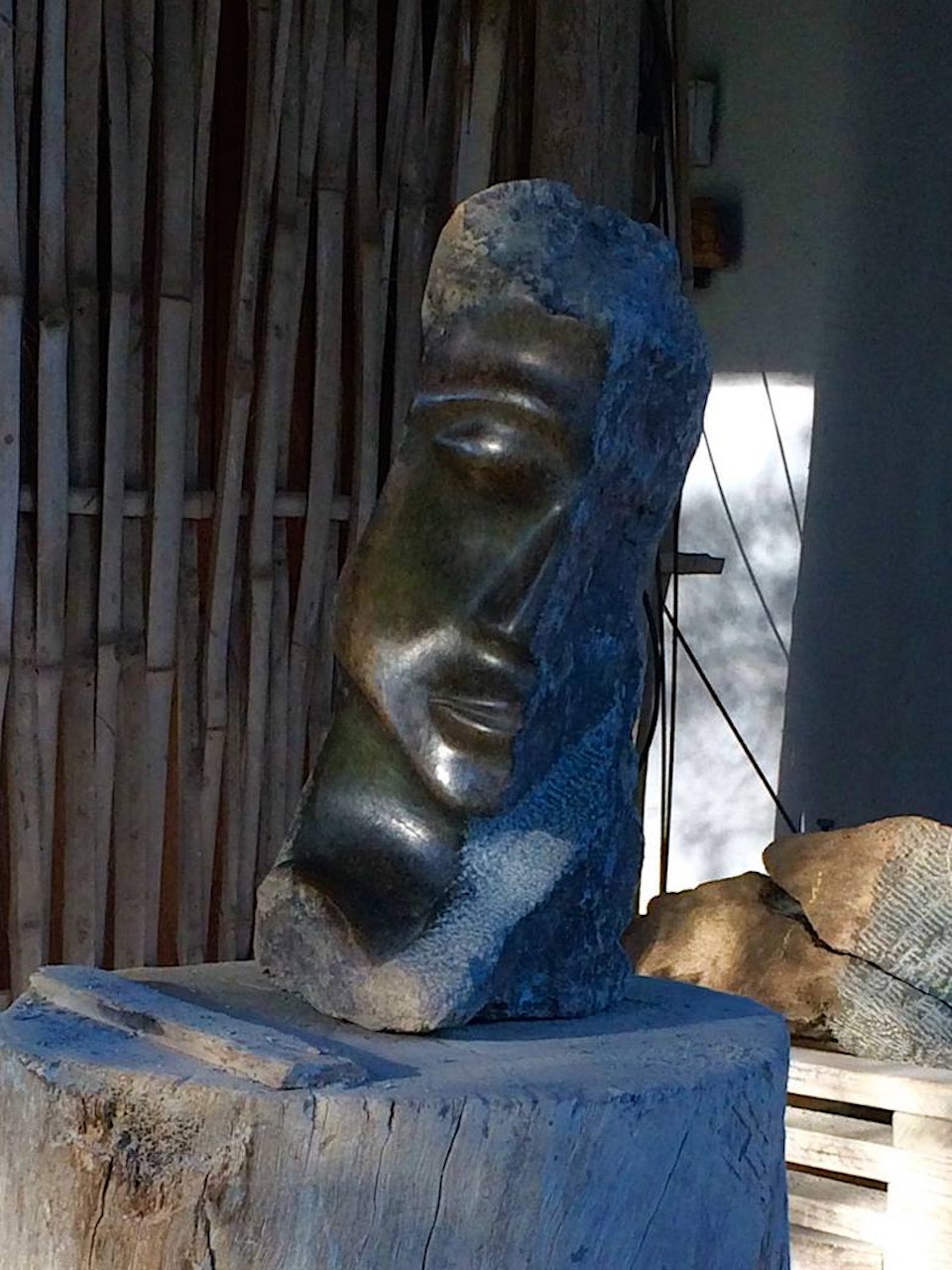
My finished stone sculpture. Courtesy of Sarika Pandit.
My stone lady now sits proudly on a wooden shelf in the hall of my apartment and each time I glance at it, I think of narrow dusty lanes, open maize fields, a majestic Mt. Meru, a green gallery of sculptures and a smiling Mieke under a clear blue African sky.
I had carved a life for myself. In stone. And I was finally going to take it all the way home.
Written by Sarika Pandit
Vacation with Mieke in Arusha, Tanzania
For more stories and new artist updates, subscribe here.
